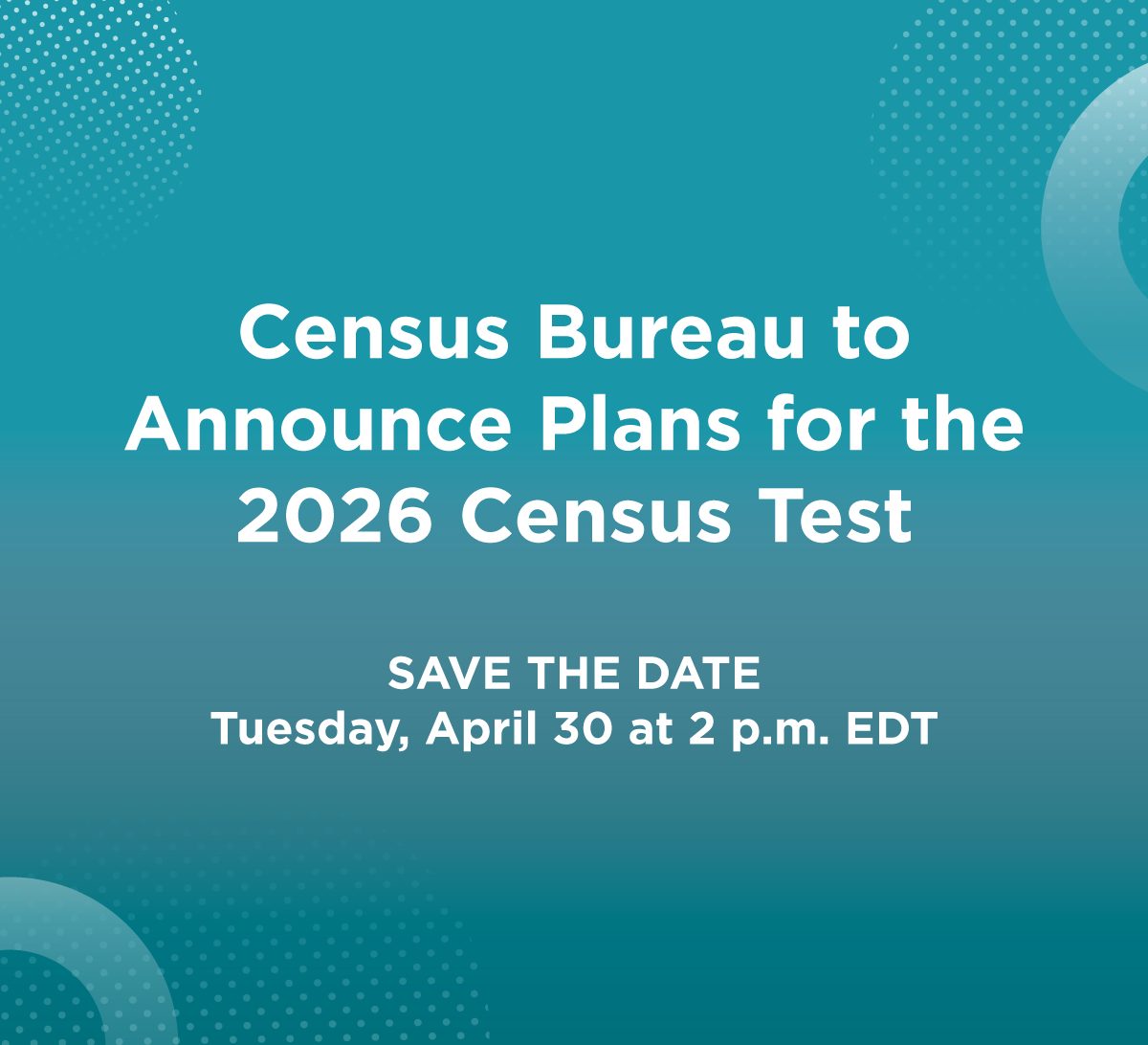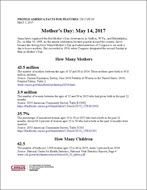Facts for Features: Mother’s Day: May 14, 2017
Note: Three statements in the Mother’s Day Facts for Features have been corrected and are in red below. Please disregard the previous version sent on May 8, 2017.
Anna Jarvis organized the first Mother’s Day observances in Grafton, W.Va., and Philadelphia, Pa., on May 10, 1908. As the annual celebration became popular around the country, Jarvis became the driving force behind Mother’s Day and asked members of Congress to set aside a day to honor mothers. She succeeded in 1914, when Congress designated the second Sunday in May as Mother’s Day.
How Many Mothers
43.5 million
The number of mothers between the ages of 15 and 50 in 2014. These mothers gave birth to 95.8 million children.
Source:
3.9 million
The number of women between the ages of 15 and 50 in 2015 who had given birth in the past 12 months.
Source:
35.7%
The percentage of unmarried women ages 15 to 50 in 2015 who had a birth in the past 12 months. About 64.3 percent of women ages 15 to 50 who had a birth in the past 12 months were married.
Source:
How Many Children
62.5
The number of births per 1,000 women ages 15 to 44 in 2015, down 1 percent from 2014.
Source:
22.3%
The percentage of women ages 15 to 50 in 2014 who had given birth to two children. About 42.4 percent had no children, 17 percent had one, 11.7 percent had three, and about 6.8 percent had four or more.
Source:
Characteristics of Women With a Recent Birth
3.98 million
The number of registered births in 2015, down less than 1 percent from 2014. Of this number, 229,715 were to teens ages 15 to 19.
Source:
62.4%
The percentage of women ages 16 to 50 who had a birth in the past 12 months who were in the labor force.
Source:
31.8%
The percentage of women who had given birth in the past 12 months who had a bachelor’s degree or higher.
Source:
86.8%
The percentage of women ages 15 to 50 who gave birth in the past year and who have at least a high school diploma or equivalent.
Source:
63
The number of births in the past year per 1,000 women ages 15 to 50 with a graduate or professional degree. The number was 53 per 1,000 for women whose highest level of education was a bachelor’s degree.
Source:
Noah and Emma
The most popular baby names for boys and girls, respectively, in 2015.
Sources:
Mothers Celebrated
13,419
The number of florists nationwide in 2015. Since 2005, the number of florist establishments decreased from 21,135 to 13,419, a decline of 36.5 percent. The number of employees in floral shops also declined from 101,861 to 60,076 employees in 2015, a decline of 41.0 percent.
Sources:
14,162
The number of employees of greeting-card publishers in 2015.
Sources:
16,345
The number of cosmetics, beauty supplies and perfume stores nationwide in 2015. Perfume is a popular gift given on Mother’s Day.
Sources:
22,160
The number of jewelry stores in the United States in 2015—the place to purchase necklaces, earrings and other timeless pieces for mom.
Sources:
Stay-at-Home Moms
5.0 million
The number of stay-at-home moms in married-couple family groups in 2016.
Sources:
Taking Care of the Kids
888,357
The number of people employed at one of the 74,589, child day care services across the country in 2015. In addition, there were 670,887 child day care services without paid employees in 2014. Many mothers turn to these centers to help juggle motherhood and careers.
Sources:
Note: New statistics will be available at the end of May for Nonemployer Statistics.
Single Moms
9.8 million
The number of single mothers living with children younger than age 18 in 2016, up from 7.7 million in 1985.
Sources:
421,861
The number of women ages 15 to 50 living with a cohabiting partner in 2015 who had given birth in the past 12 months.
Sources:
The following is a list of observances typically covered by the Census Bureau’s Facts for Features series:
| Black (African American) History Month (February) Super Bowl Valentine's Day (Feb. 14) Women's History Month (March) Irish-American Heritage Month (March)/ St. Patrick's Day (March 17) Earth Day (April 22) Asian/Pacific American Heritage Month (May) Older Americans Month (May) Mother's Day Hurricane Season Begins (June 1) Father's Day |
The Fourth of July (July 4) Anniversary of Americans With Disabilities Act (July 26) Back to School (August) Labor Day Grandparents Day Hispanic Heritage Month (Sept. 15-Oct. 15) Unmarried and Single Americans Week Halloween (Oct. 31) American Indian/Alaska Native Heritage Month (November) Veterans Day (Nov. 11) Thanksgiving Day The Holiday Season (December) |
Editor’s note: The preceding data were collected from a variety of sources and may be subject to sampling variability and other sources of error. Facts for Features are customarily released about two months before an observance in order to accommodate magazine production timelines. Questions or comments should be directed to the Census Bureau’s Public Information Office: telephone: 301-763-3030; or e-mail: pio@census.gov.










